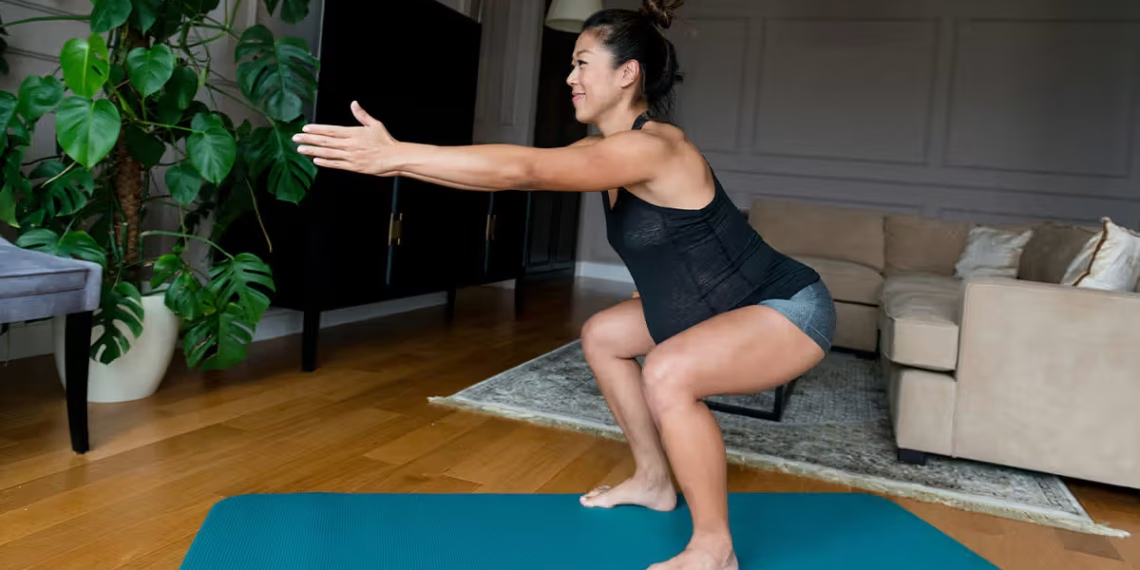Cardiovascular exercise doesn’t have to mean gasping for breath or pushing yourself to exhaustion. Gentle cardio exercises offer a sustainable, accessible approach to improving heart health, building endurance, and enhancing overall wellbeing—all without the high impact or intensity that can be intimidating or unsuitable for many people.
Whether you’re new to exercise, recovering from injury, managing a chronic condition, or simply prefer a more moderate approach to fitness, gentle cardio can deliver impressive health benefits while being kind to your body. This guide explores the world of low-intensity cardiovascular exercise and how to make it work for your lifestyle.
Understanding Gentle Cardio
Gentle cardio, also known as low-intensity steady-state (LISS) cardio, involves maintaining a moderate heart rate—typically between 50-65% of your maximum heart rate—for an extended period. Unlike high-intensity interval training (HIIT) or vigorous exercise, gentle cardio allows you to sustain a conversation comfortably while exercising, making it an ideal choice for building an exercise habit that feels manageable and enjoyable.
The beauty of low-intensity cardio lies in its accessibility. You don’t need special equipment, a gym membership, or advanced fitness levels to get started. These exercises work with your body’s natural rhythms and can be adapted to virtually any fitness level or physical limitation.
Types of Gentle Cardio Exercises
Walking
Walking is perhaps the most accessible form of gentle cardio. Whether you’re strolling through your neighborhood, walking on a treadmill, or exploring nature trails, this simple activity strengthens your cardiovascular system without stressing your joints. Start with a comfortable pace for 10-15 minutes and gradually increase duration and distance. Walking can be done virtually anywhere, requires no special equipment beyond comfortable shoes, and can easily be integrated into daily life through active commuting or lunchtime walks.
Swimming and Water Aerobics
Water-based exercises provide exceptional cardiovascular benefits while the water’s buoyancy reduces stress on joints, making them perfect for people with arthritis, joint pain, or mobility limitations. Swimming laps at a comfortable pace, water walking, or participating in water aerobics classes all count as gentle cardio. The water provides natural resistance, helping to strengthen muscles while protecting your body from impact.
Cycling
Whether on a stationary bike or cycling outdoors on flat terrain, biking offers smooth, rhythmic cardiovascular exercise. The seated position reduces strain on ankles, knees, and hips while still elevating your heart rate. Stationary cycling allows you to control intensity precisely, making it easy to stay in the gentle cardio zone. Outdoor cycling adds the mental health benefits of being in nature and exploring your surroundings.
Elliptical Training
The elliptical machine provides a low-impact alternative to running by eliminating the jarring foot strikes associated with jogging. The smooth, gliding motion works both upper and lower body while being gentle on joints. Most ellipticals allow you to adjust resistance and incline, giving you control over intensity to maintain that comfortable, conversational pace.
Tai Chi
This ancient Chinese practice combines gentle, flowing movements with deep breathing and meditation. While it might not seem like traditional cardio, tai chi elevates heart rate moderately while improving balance, flexibility, and mental clarity. The slow, deliberate movements are accessible to virtually all fitness levels and can be practiced almost anywhere.
Yoga (Flow Styles)
Gentle flow yoga styles like Hatha or Vinyasa practiced at a moderate pace can provide cardiovascular benefits along with flexibility and strength improvements. The continuous movement between poses, combined with controlled breathing, creates a meditative cardio workout that also reduces stress and improves body awareness.
Dancing
Putting on your favorite music and dancing at a comfortable pace is a joyful form of gentle cardio. Whether you follow online dance fitness videos, take ballroom dancing classes, or simply freestyle in your living room, dancing elevates your heart rate while boosting mood and coordination.
Rowing
Using a rowing machine at low to moderate intensity provides full-body cardio exercise. The smooth, repetitive motion engages legs, core, arms, and back while being low-impact. Focus on maintaining proper form and a steady, sustainable pace rather than pushing for speed or power.
The Multifaceted Benefits of Gentle Cardio
Cardiovascular Health
Regular gentle cardio strengthens your heart muscle, improves circulation, and can help lower blood pressure and cholesterol levels. These exercises train your cardiovascular system to work more efficiently, reducing your risk of heart disease, stroke, and other cardiovascular conditions. The consistency possible with low-intensity exercise often leads to better long-term adherence than sporadic high-intensity workouts.
Weight Management
While gentle cardio burns fewer calories per minute than intense exercise, longer duration sessions can contribute significantly to creating a caloric deficit. More importantly, because low-intensity exercise is more sustainable and recovery-friendly, you can do it more frequently. Your body also uses fat as the primary fuel source during gentle cardio, making it effective for fat loss when combined with proper nutrition.
Joint Health and Mobility
Low-impact cardio exercises lubricate joints and strengthen the muscles surrounding them without causing additional wear and tear. This makes gentle cardio particularly valuable for people with arthritis, past injuries, or joint concerns. Regular movement also maintains and can improve range of motion and flexibility.
Mental Health and Stress Reduction
Gentle cardio provides significant mental health benefits. The moderate intensity allows your mind to wander or focus on your surroundings, creating a meditative effect that reduces stress and anxiety. Exercise releases endorphins, improves sleep quality, and can help manage symptoms of depression. Because it doesn’t leave you exhausted, gentle cardio can actually increase your energy levels throughout the day.
Sustainability and Injury Prevention
The lower intensity means less physical stress on your body, reducing injury risk and allowing for quicker recovery. You can exercise more frequently without overtraining, creating a sustainable long-term fitness habit. This consistency is often more valuable than occasional intense workouts that leave you too sore or tired to exercise regularly.
Improved Sleep
Regular gentle cardio can improve both sleep quality and duration. Unlike vigorous evening exercise which can be stimulating, moderate cardio can be done closer to bedtime without disrupting sleep patterns, though individual responses vary.
Incorporating Gentle Cardio Into Your Fitness Routine
Start Where You Are
Begin with your current fitness level, even if that means just five or ten minutes of activity. There’s no minimum threshold for benefits—any movement is better than none. Listen to your body and gradually increase duration before intensity.
Aim for Consistency
The key to reaping benefits from gentle cardio is consistency. Aim for at least 150 minutes of moderate-intensity cardio per week, as recommended by health organizations. This could mean 30 minutes five days per week, or you could break it into shorter 10-15 minute sessions throughout the day.
Use the Talk Test
To ensure you’re in the gentle cardio zone, use the talk test: you should be able to carry on a conversation but not sing comfortably. If you’re gasping for breath, reduce intensity. If you can easily sing, you might want to pick up the pace slightly.
Mix It Up
Variety prevents boredom and works different muscle groups. Combine several types of gentle cardio throughout your week. Monday might be a walk, Wednesday could be swimming, and Friday might be cycling. This cross-training approach also reduces the risk of overuse injuries.
Schedule It
Treat your gentle cardio sessions as non-negotiable appointments. Morning exercise can energize your day, lunch breaks can provide a midday refresh, and evening sessions can help you decompress. Find what fits your schedule and personality.
Make It Enjoyable
Choose activities you genuinely enjoy or make them more pleasant by listening to podcasts, audiobooks, or music. Exercise with friends or family, explore new routes, or join classes for social connection and accountability.
Track Your Progress
Keep a simple log of your activities, duration, and how you feel. Watching your progress—whether that’s walking farther, swimming more laps, or simply feeling better—provides motivation and helps you see patterns in what works best for you.
Warm Up and Cool Down
Even for gentle cardio, spend a few minutes warming up with very light movement and end with light stretching. This prepares your body for exercise and aids recovery.
Special Considerations
Medical Conditions
If you have existing health conditions, particularly heart disease, diabetes, or joint problems, consult with your healthcare provider before starting any new exercise program. They can provide personalized guidance on appropriate activities and intensity levels.
Proper Form
Learning correct form prevents injury and makes exercise more effective. Consider working with a fitness professional initially, especially for activities like rowing or using gym equipment.
Listen to Your Body
While some muscle fatigue is normal, sharp pain, dizziness, chest pain, or severe shortness of breath are signals to stop and seek medical attention. Don’t push through genuine pain—gentle cardio should feel challenging but not painful.
Progression
As your fitness improves, gradually increase duration, frequency, or add gentle variations like walking up gentle hills or increasing resistance slightly. Progress should feel natural, not forced.
Conclusion
Gentle cardio exercises offer a powerful, accessible path to improved health and fitness. By working with your body rather than against it, low-intensity cardiovascular activities provide substantial benefits while minimizing injury risk and maximizing sustainability. Whether you’re just beginning your fitness journey, returning after time away, or simply prefer a gentler approach, these exercises can form the foundation of a healthy, active lifestyle that you’ll actually maintain long-term. The best exercise is the one you’ll do consistently, and for many people, gentle cardio fits that bill perfectly. Start today with just a few minutes of movement—your heart, body, and mind will thank you.
- what is tai chi walking – gentle cardio option
- low-impact gentle cardio
- cardio benefits of tai chi walking
- gentle movement for cardio
- gentle cardio for elderly
- senior-friendly gentle cardio
- cardio for longevity
- fitness activities with gentle cardio
- active aging with gentle cardio
- wellness through gentle cardio walking






